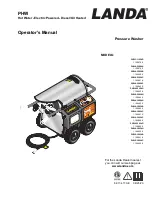
15
CARE INSTRUCTIONS
Pretreat spots and stains. Select water temperature, cycle, and
time according to the type of blanket being washed. Two rinses
may be necessary. Check care label to see if manufacturer
recommends machine washing.
Wash small loads. Crowding may cause wrinkling. Replace
slipcovers while still slightly damp. They will dry to fit tightly.
NOTE:
Sun-damaged curtains and draperies will tear whether
hand or machine washed.
When using chlorine bleach for soaking, add extra detergent to the
load. Avoid overuse of fabric softeners – absorbency will be
reduced.
Elastic picks up oil from the body. Oil can damage elastic. Wash
often to reduce the damage. Use warm water and sufficient
detergent to remove oils. Do not use chlorine bleach.
Items will be clearly labeled as flame-retardant. Follow
manufacturer’s instructions to retain flame-retardant qualities.
Knits are comfortable to wear because they stretch. However, this
means that knits are more likely to be stretched and damaged
when washed (especially bulky knits). Knits made of synthetic
fabrics such as polyester, nylon, and acrylic tend to keep their
original shape more than knits made of cotton or ramie.
Washing feather pillows is not recommended unless they will be
dried in a dryer.
Treat as delicate items. Wash in warm water. Wash small items in
a mesh bag.
Do not wash cotton-filled comforters unless they are quilted or
stitched. Tucked cotton batting tends to slip and become lumpy.
An extra rinse may be necessary.
Shake or vacuum rugs to remove loose dirt. Wash more than one
rug at a time. If washing only one rug, add bath towels to balance
the load.
Wash only one or two items at a time. You may need to stop the
washer occasionally to press air from the items being washed. An
extra rinse may be necessary.
Washing special-care items
Most garments and household textiles have care labels with laundering instructions. Always
follow care label directions when they are available. Below are general washing instruc-
tions for some special washables.
ITEM
Blankets
(electric or woolen)
Curtains, drapes,
slipcovers
Diapers
Elastic, spandex
Flame-retardant
clothing
Knits, washable
Pillows, stuffed
toys
Plastic, rubber
items
Quilts, bedspreads
Scatter rugs
Snowsuits, jackets
L A U N D R Y T I P S
Summary of Contents for LXR9245EQ0
Page 22: ...22 NOTES ...
Page 23: ...23 NOTES ...










































